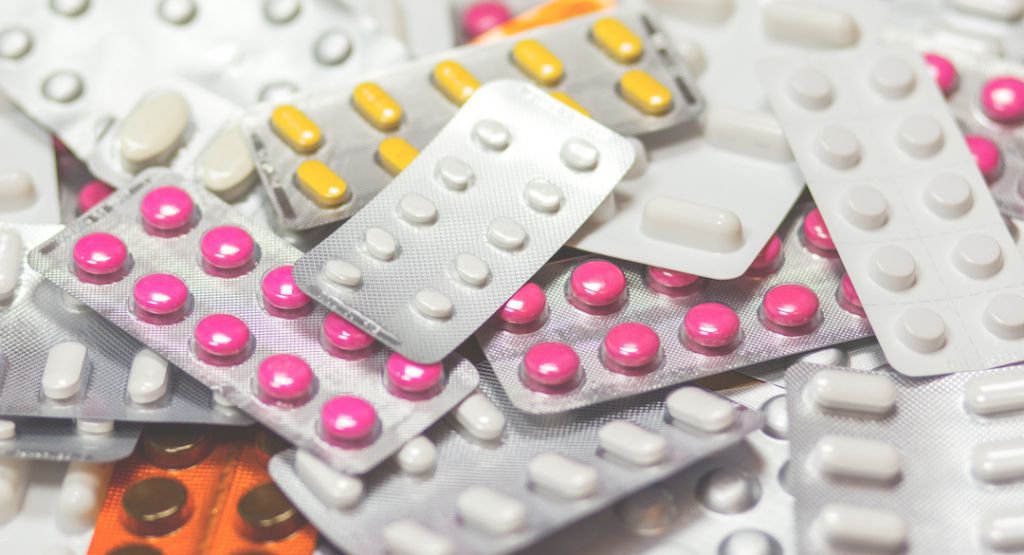
We’ve all seen those commercials that tell you to ask your doctor about a certain drug — usually while a happy person spins around in a field. Aside from the fact that an ad isn’t the best way to get medication recommendations, it may not be quite so simple to get that specific drug. That’s because of drug formularies. And if you’ve ever wondered what a drug formulary actually is — or why you should care about them — you’ve come to the right place. We’ve put together a handy FAQ to help you better understand formularies and how they can affect you.
What’s a drug formulary and why do insurance companies have them?
A formulary is a list of generic and brand-name prescription drugs that your insurance company covers. They’re designed to ensure that patients get safe and effective drugs while keeping costs down for both patients and insurance companies.
Formularies typically have several tiers. The first tier contains the least expensive drugs (usually generics), and each subsequent tier becomes more expensive. Depending on your insurance plan, you’ll pay either a copay (a set amount) for drugs in each tier or coinsurance (a percentage of the total cost of the drug). With some plans, you’ll have to pay the full cost of prescriptions until you meet your plan’s deductible even if they’re part of the formulary.
Here’s an example of a tiered formulary:
- Tier 1: $10 (inexpensive generics)
- Tier 2: $30 (formulary brand-name drugs and more expensive generics)
- Tier 3: $50 (non-formulary drugs)
- Tier 4: 20% of full price up to $150 (specialty drugs)
How do insurance companies decide what’s in their formulary?
Each insurance company has a panel of independent experts, known as a pharmacy and therapeutics (P&T) committee, made up of practicing physicians and pharmacists. This group selects drugs for the formulary based on their safety, efficacy, and cost-effectiveness. They meet regularly to discuss new research, new drugs, and safety data and update the formulary as needed. This means that the formulary is based on the latest science — but it also means that sometimes a drug you’ve been taking may be removed from the formulary.
Are generic drugs as safe and effective as the brand-name version?
“For the majority of folks out there, there should be no difference in effectiveness or side effects between a generic or brand-name medication,” says Brian Secemsky, MD, a One Medical provider in San Francisco.
The Food and Drug Administration (FDA) performs a rigorous review to ensure that generics perform the same as the brand-name drugs they’re based on. The active ingredients, dosage, effectiveness, strength, quality, safety, and route of administration of a generic drug must all be the same as the brand-name version. However, they don’t have to contain the same inactive ingredients as the original. These include dyes, binders, preservatives, and flavoring agents that shouldn’t affect how the drug works, but may affect the look or taste. Some people may have allergic reactions to inactive ingredients in one drug but not another.
There may also be some minor variation (about 3.5%) in how much of the active ingredient gets absorbed into the bloodstream and how fast. While most people won’t notice any difference due to this, some are more sensitive to small changes in blood concentration. The vast majority of patients will respond equally to generics — and they’re typically much cheaper — so we recommend starting with them in most cases. If you’re concerned that the generic isn’t working well for you, have a conversation with your provider — they’ll be able to determine if it’s time to try something else.
There are certain types of medication, known as narrow therapeutic index drugs, where small blood concentration variations can actually have a big impact on effectiveness and side effects. Our providers will always take this into consideration when prescribing these drugs to make sure you’re getting the right drugs and dosage for your needs. And we’re available 24/7 if you have any questions or issues.
What happens if the generic drug doesn’t work for me or a prescription I need isn’t part of the formulary?
Depending on your plan, you may be able to get the prescription covered one of two ways:
Prior authorization: Your provider has to request permission from your insurance company to prescribe you a drug that’s not part of the formulary.
Step therapy, prerequisite therapy, or prior therapy: You’ll need to try drugs that are part of the formulary before you’re able to take a drug that is more expensive, has more side effects, or is not clinically proven to be effective for your condition yet.
At One Medical, we’ll work with you, your pharmacy, and your insurance company to make sure you get the most effective medication for your health needs at the best cost. And if you ever have an issue with how a medication is working, you can call us or message us through the app anytime.
The One Medical blog is published by One Medical, a national, modern primary care practice pairing 24/7 virtual care services with inviting and convenient in-person care at over 100 locations across the U.S. One Medical is on a mission to transform health care for all through a human-centered, technology-powered approach to caring for people at every stage of life.
Any general advice posted on our blog, website, or app is for informational purposes only and is not intended to replace or substitute for any medical or other advice. 1Life Healthcare, Inc. and the One Medical entities make no representations or warranties and expressly disclaim any and all liability concerning any treatment, action by, or effect on any person following the general information offered or provided within or through the blog, website, or app. If you have specific concerns or a situation arises in which you require medical advice, you should consult with an appropriately trained and qualified medical services provider.
